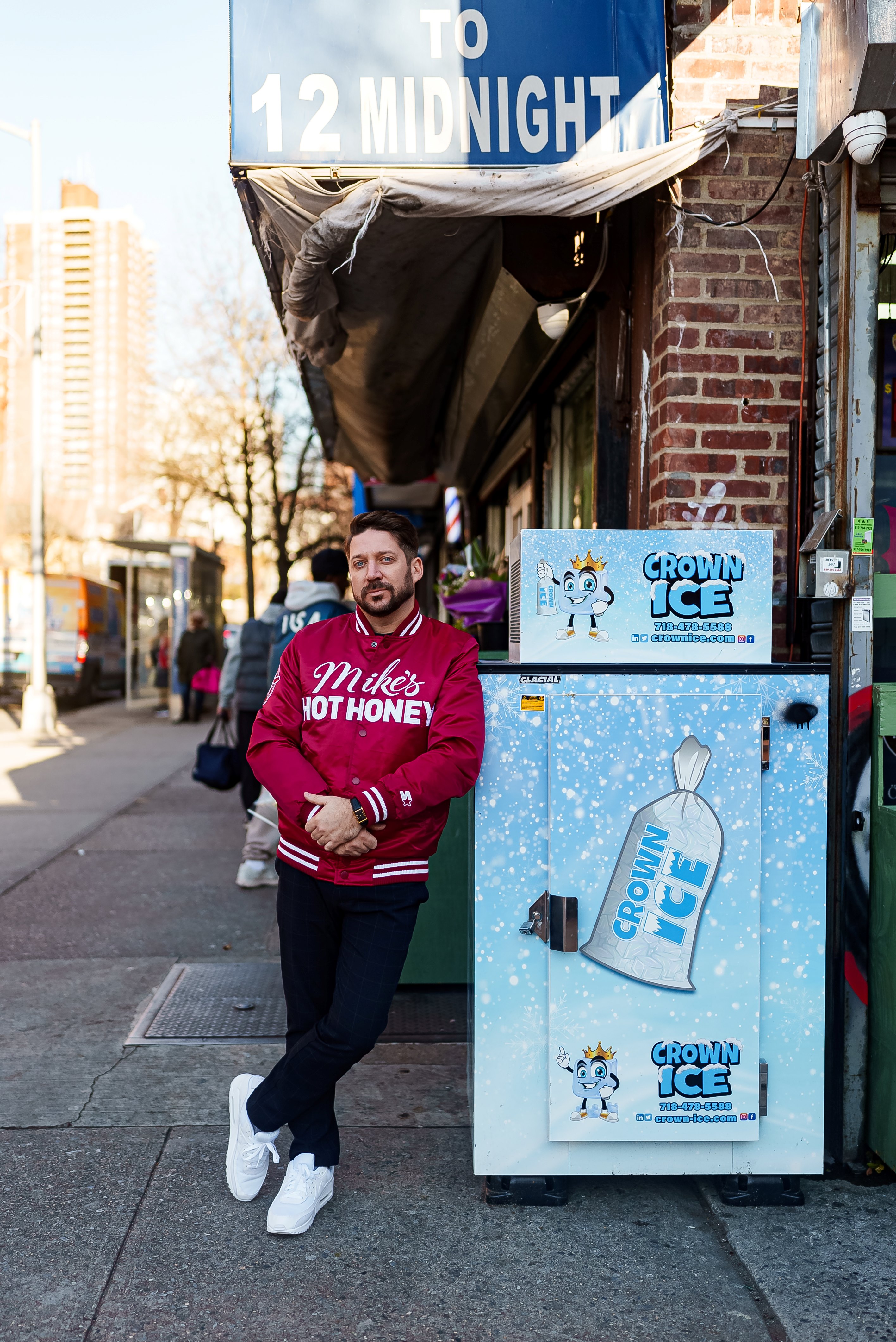Chili oil is dead, long live chili honey?
By Pomélo
Very popular in France — much to the dismay of the Italians — spicy oil is beginning to face competition from a sweet-and-savory topping made in the USA, one that's deliciously compatible with pizza, but not only: chili honey.
Americans are already obsessed. And the story of chili honey doesn’t begin yesterday — it owes much to a Massachusetts native who made New York his home. Mike Kurtz, now 43, was just 22 when he discovered chili-infused honey during a college trip, in a pizzeria tucked away in the Brazilian village of Vale do Capão, at the entrance to the Chapada Diamantina National Park. Instantly won over by this then-unknown topping, he decided to try making it himself back in his student apartment kitchen. Eight months later, he had his recipe: a delicate blend of honey, chili, and vinegar — though the exact proportions remain his secret.
In 2010, Mike Kurtz joined the renowned pizzeria Paulie Gee’s in the Greenpoint neighborhood of Brooklyn (the group now has about ten locations across the country) as an apprentice pizzaiolo, and convinced his boss, Paul Giannone, to add “hot honey” to the menu. That’s how the “Hellboy” was born — a pepperoni pizza drizzled with this now-famous syrup, whose spicy and sweet-and-savory notes have remained a resounding hit ever since.
Fifteen years later, Mike Kurtz, now at the helm of his own brand, Mike’s Hot Honey, is reaping more rewards than ever from his creation. His Brooklyn-based company is booming: $60 million is the estimated value of its sales for 2025, up from $40 million in 2024. Across the Atlantic, Mike Kurtz’s chili honey — now a benchmark in its category — can be found in nearly 30,000 grocery stores, supermarkets, and restaurants throughout the United States and Canada.

The man is also multiplying collaborations of all kinds with his brand — including one with Maille, the illustrious French house known for its Dijon mustard, as well as with New York-based smoked salmon brand Acme, and California’s almond-growing agricultural cooperative, Blue Diamond Growers. All of which are proof of hot honey’s versatility — far from being limited to its original purpose as a pizza topping. “It goes with everything: fried chicken, cocktails, even ice cream,” says Mike Kurtz.
For now, held back by commercial policies and the strict quality standards imposed by the European Union, he has yet to export his creation across the Atlantic. Still, the trend hasn’t gone unnoticed among some internationally minded French chefs. One example is Mehdi Favri, who serves a roasted cheese dish enhanced with sumac, caraway, coriander, and homemade chili honey at his new Paris restaurant, Maslow Temple. It’s also the case for Florent Peineau, chef at pizzeria Rori in Paris’s 11th arrondissement — opened by the duo Angela Kong and Antoine Bernardin, who also run the restaurant Bouche — where he serves an excellent version infused with bird’s eye chili, drizzled over mozzarella and spicy salami pizza slices. A treat that unmistakably recalls Paulie Gee’s bestseller created by Mike Kurtz.
Driven by the growing appetite of French palates for spicy food, a handful of French hot sauce brands have also jumped on the hot honey bandwagon. Chief among them is Martin Hot Sauce, a family-run company based in Loir-et-Cher, which offers — among other fiery condiments — a chili-infused honey made with 100% French habanero peppers. Is this the final nail in the coffin for spicy oil?
Photos by Dave Jeffers